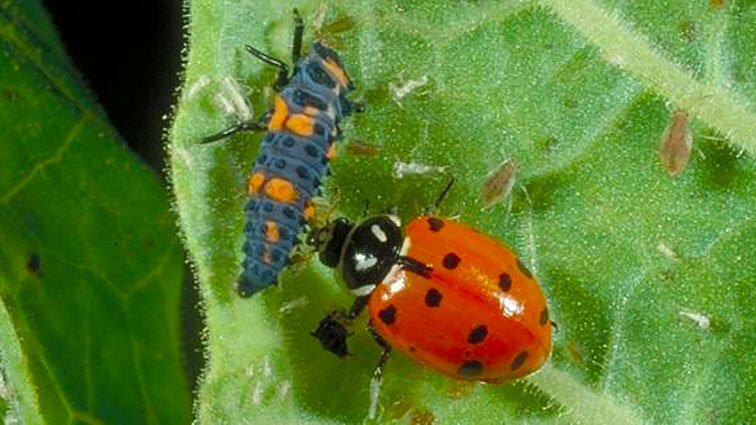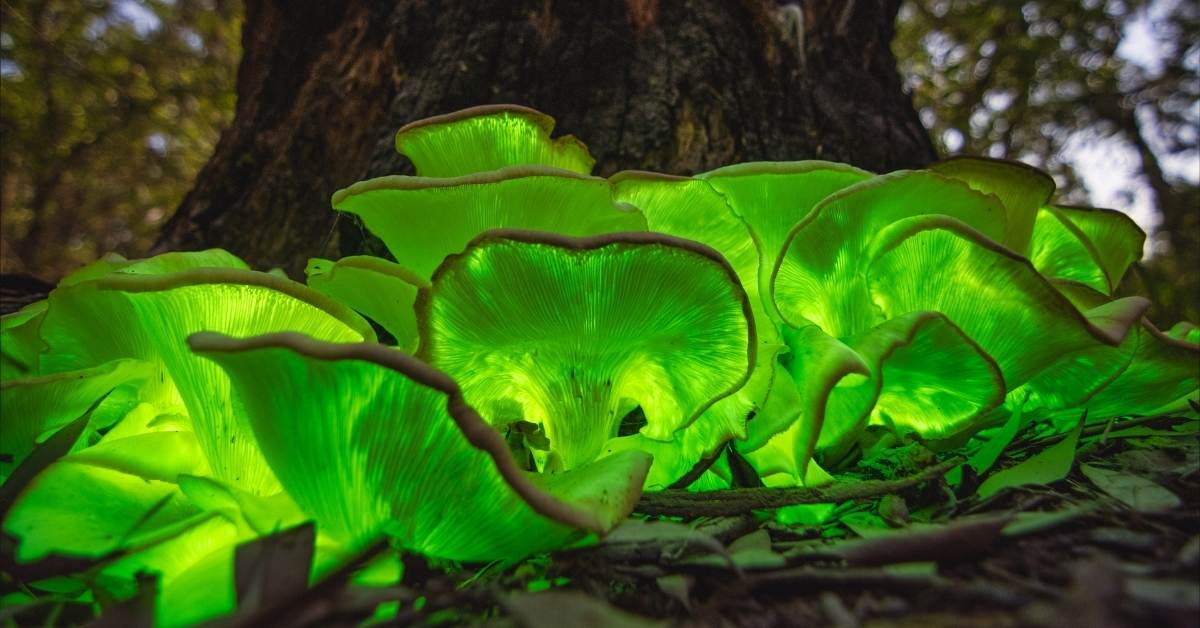Did you know that organic crop protection is a $10 billion industry worldwide?
Organic crop protection is gaining significant popularity among hobby gardeners, driven by a growing awareness of the potential risks associated with chemical usage in gardens. In this article, we aim to offer valuable guidance by presenting ten tips on how to incorporate organic plant protection strategies into your natural gardening process effectively. By adopting these methods, you can promote a healthier and more sustainable gardening approach while safeguarding your plants from pests and diseases.
Organic plant protection: The most important things at a glance
If you prefer to use organic plant protection instead of conventional pesticides, you should generally avoid chemicals in the garden. It is way more environmentally friendly to use biodegradable products, promote beneficial organisms, and strengthen plants against diseases and pests from within.
1 ) Use powder instead of spraying
Natural pesticides for plants, such as rock dust and algae lime powder, are very popular with organic gardeners. The powders, which are scattered over the soil and easily raked in, enrich the soil with various minerals and trace elements such as selenium or iron.
If this organic plant protection is applied regularly, it increases the absorption of these substances by the plants and increases their resistance. If the fine powder is dusted directly over leaves and shoots, eating insects, such as potato beetles or cabbage-white caterpillars, seek other victims. It can also prevent black spot fungus on roses or celery leaf spots (celery leaf blights).
Caution: However, too frequent use hinders photosynthesis.
You might like to see this: All seasons gardening – Create year-round gardens
2) Biological plant protection by beneficial organisms

Anyone relying on biological plant protection in the garden cannot avoid beneficial organisms because beneficial insects such as hoverflies, earwigs, and their offspring prevent lice and other harmful insects from getting better. One of the most effective hunters is the ladybird. Offer the ladybirds natural hiding places for hibernation, such as a “forgotten” pile of leaves.
In spring, the beetles attach their yellow egg clusters to the underside of the leaves. The up to eight millimeters long, black, orange-spotted larvae (aphid lions) consume up to 600 aphids, spider mites, and young bugs during their development.
3) Organic treatment of powdery mildew in the orchard

Powdery mildew is one of the most common plant diseases. The fungus usually infests cucumbers, zucchini, lettuce, roses, and larkspur. Apple trees are already infected in spring when they bud out. Buds and young leaves appear as if they were powdered with flour, and if the infestation is severe, the shoot tips die.
If you want to implement natural plant protection in the garden, you should, therefore, either choose mildew-resistant varieties or spray preparations with net sulfur several times at the first signs at intervals of 14 days (for example, “organic powdery mildew-free”).
4) Read the package information
Anyone who attaches importance to natural plant protection should also not use organic sprays without hesitation. Please read the concentration indicated on the package, the recommended number of applications, and the spraying distances carefully and adhere to them.
This applies in particular to natural plant toxins, such as extracts of the Indian neem or the active ingredient pyrethrum, which is extracted from a specific type of chrysanthemum. Both substances also damage beneficial insects such as butterfly caterpillars, bumblebees, and bees on direct contact.
5) Organic plant protection with homeopathy
What has proven to be successful with humans and animals is now also used in the garden. If homeopathic remedies are used in organic crop protection, they can drive away pests and help plants to grow more vigorously.
Calendula C 30 (6 globules/30 liters of water) is said to promote the root development of young plants. Ready-to-use preparations such as homeopathic plant elixir are also administered via the irrigation water; rose elixir stimulates flower formation in roses. It is also said to help strawberries to produce a rich fruit set.
6) Don’t be afraid of the boxwood borer
An inconspicuous, grey-brown moth called the boxwood borer (box tree borer), and its voracious caterpillars repeatedly cause owners to resort to hard chemistry out of desperation in the form of carefully cut boxwood balls and bed borders. Collecting the Zünsler caterpillars is only possible with smaller individual trees.
The pests are welcome protein food for titmice and wasps, but with a real invasion, they can hardly get the plague under control. A reliable effect can be achieved with Bacillus thuringiensis preparations (for example, “Neudorff Xentari Caterpillar-free“).
This soil bacterium, which is harmless to humans, birds, and most beneficial insects, causes the caterpillars to die within a few days. Application: Spray from the hatching of the first caterpillars and, at the same time, moisten the leaves and shoots well inside the bushes.
7) Snails spoil the appetite
You can quickly fall behind in the fight against the powerful snail – but there is a plant protection trick that is purely organic: Effective is the laying out of boards as day hiding places and regular collection of the snails. Of course, this takes time and is not everyone’s cup of tea:
If you spread slug pellets around endangered plants, you should choose preparations containing the active ingredient iron-III phosphate. The bait granulate acts as a food stop and are harmless to pets, hedgehogs, and snail-eating birds.
8) Green power: plants help plants

Even prepared plant extracts are often used as fertilizer – but the natural pharmacy also keeps some herbs ready that can be used in natural crop protection. Each herb has its own specialty when it comes to controlling pests and plant diseases: real comfrey prevents the fungal attack, while chamomile protects vegetables, strawberries, and ornamental plants from root rot.
Stinging nettle spray expels aphids, while wormwood is used to combat blackberry mites and vegetable flies. Rain fern is used as a watering agent and prevents the settlement of ants. Preparation of the broths: Leave about 1 kilo of fresh cabbage to soak in 10 liters of water for 12 to 36 hours, strain and dilute (100 to 200 milliliters to 1 liter of water).
9) Use fleece and nets in organic crop protection
With fleece and close-meshed fruit or vegetable protection nets, you can protect sensitive crops or young plants from late frost, heavy rain, and draughts. You can also prevent leek moths, carrots, cabbage, or onion flies, as well as cabbage moths and other insect pests, from entering.
However, this only works if the cover is applied immediately after sowing or planting. You must also ensure that there are no loopholes at the edges. Tip for covering small-crowned fruit trees and berry bushes: If possible, always use white nets; under the black fabric, there is a risk of heat accumulation. And: only place the nets when the flowers are already pollinated and the first small fruits can be seen.
10) Trapping pests in an organic way
Traps equipped with attractants (pheromones) and adhesive foil catch male moths from apple and plum moth moths and thus prevent fertilization of the females. Yellow boards attract the cherry fruit fly; cherry vinegar flies are caught in cups filled with a catching liquid. With these catching methods, the maggot infestation of the fruits can be significantly reduced.
However, real pheromone traps should not be hung directly in the endangered plants but at a distance. For example, attractive traps for the boxwood borer work best as an indicator to show the beginning of the butterfly flight. In this way, the optimum time for controlling the caterpillars can be determined depending on the type of pest.
Conclusion
In conclusion, organic crop protection is a viable and beneficial alternative to conventional pesticides that can enhance the health and productivity of plants and the environment. By following these ten simple tips, you can implement organic plant protection strategies in your garden and enjoy the fruits of your labor without harming yourself or other living beings. Organic gardening is not only a hobby but also a way of life that respects nature and its balance.
FAQ – Crop Protection
What are the methods used to protect crops?
Integrated pest and insect control is the most effective method for preventing harm to crops, and it should be used whenever possible. Spraying insecticides and other pesticides on crops helps to reduce the amount of damage done to the crops by insects and other types of pests.
What is meant by crop protection?
Crop protection is the study and practice of controlling plant diseases, weeds, and other pests (both vertebrate and invertebrate) that cause harm to crops and forests. This may include both vertebrate and invertebrate organisms in sustainable agriculture. Field crops, such as maize, wheat, and rice, are examples of crops. Vegetable crops, such as potatoes and cabbages, are also examples of crops.
What does organic farming prevent?
Organic farming, as opposed to conventional agriculture, makes use of less amount of pesticides, lessens the amount of soil erosion that occurs, lessens the amount of nitrate that is leached into groundwater and surface water and recycles animal waste on the farm.
How can we protect crops from pests more sustainably?
Utilize cultivars and types that are resistant, crop sequences and associations, as well as cultural approaches, in order to reduce the amount of pressure and increase the amount of biological protection against pests and diseases. Keep a frequent and quantitative check on the condition of the equilibrium between harmful creatures, such as pests and diseases, and those that are helpful to crops.
What are the 3 phases of crop protection?
Biological control. The employment of natural enemies, such as predators, parasites, viruses, and competitors, as a method of controlling pests and the harm they cause is known as biological control. Other methods of pest management include cultural controls, mechanical controls, and physical controls.


